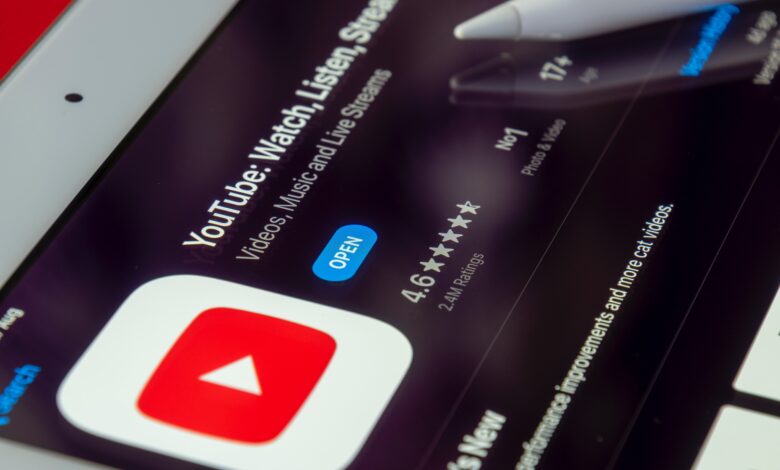rajkotupdates.news:a-ban-on-fake-youtube-channels-that-mislead-users-the-ministry-said

Have you ever stumbled upon a YouTube channel that seemed too good to be true? It turns out, it might just be. The Indian Ministry of Electronics and Information Technology recently announced a ban on fake YouTube channels that mislead users with false information. This news is not only great for viewers who deserve accurate content but also for genuine creators whose work has been overshadowed by the deceitful tactics of these imposters. In this blog post, we’ll discuss how to spot a fake YouTube channel and what you can do if you’ve been deceived by one in the past. Keep reading to learn more about this significant change!
A Ban on Fake YouTube Channels that mislead users the Ministry said
The Indian Ministry of Electronics and Information Technology has taken an important step to combat the rise of fake content on YouTube. The ministry recently announced a ban on channels that mislead users with false information. This is a significant move, considering how many individuals rely heavily on social media platforms for news and entertainment.
Fake YouTube channels have been notorious for spreading misleading information under the guise of genuine content. These imposters often use clickbait titles and thumbnails to attract unsuspecting viewers looking for quality content. In reality, these videos are filled with fake news or simply repurposed clips from other sources.
This decision by the Indian government is undoubtedly a positive development as it aims to protect internet users from being misled by fake YouTube channels. It also sends a clear message that such dishonest practices won’t be tolerated in India’s digital space.
While some may argue that this action limits freedom of speech, it’s essential to understand that there needs to be accountability in online spaces too. With more stringent measures in place, creators will hopefully focus on producing authentic and informative videos rather than relying on deceitful tactics to increase their views.
This ban serves as a reminder that we need to be responsible when sharing information online – both as creators and consumers alike.
How to spot a Fake YouTube Channel
Fake YouTube channels have become a major nuisance on the platform, but there are ways to spot them. Firstly, pay attention to the channel’s name and logo. If they look similar to that of an already established channel, it could be a fake one attempting to mislead viewers.
Another way is by checking the videos uploaded on the channel. Authentic channels usually have consistent content that aligns with their niche or genre. However, if you notice a sudden shift in topics or low-quality videos being posted frequently, it could be signs of a fake channel.
Next up is checking for engagement rates on videos such as likes, comments and shares. Fake channels often buy their engagement numbers which can make them appear popular even though no real audience exists.
Always check out the About section of any suspicious profile as authentic creators always provide detailed information about themselves and their brand whereas fake ones tend to leave this section blank or with very little detail.
These tips will help you separate genuine from fraudulent channels so that you don’t waste your time watching misleading content while also protecting yourself from potential scams online!
What to do if you’ve been deceived by a Fake YouTube Channel
If you have been deceived by a fake YouTube channel, the first thing to do is to report it. You can flag the video or channel as inappropriate and select “Misleading metadata” as the reason for your report.
You should also make sure to unsubscribe from the channel and avoid interacting with any of its videos in the future. This will prevent you from being exposed to further misleading content.
It’s important to keep in mind that not all fake channels are created equal. Some may simply be trying to gain views and subscribers through clickbait titles, while others may be more malicious in nature.
If you suspect that a fake channel has scammed you out of money or personal information, it’s important to take additional steps such as contacting your bank or changing your passwords immediately.
By taking these actions, you can help prevent others from falling victim to similar scams and protect yourself from further harm. Remember: always stay vigilant when browsing YouTube and other online platforms!
Conclusion
To sum up, the Ministry’s move to ban fake YouTube channels that mislead users is a significant step towards creating a more transparent and trustworthy online space. As internet users, we must be vigilant and cautious when browsing videos on YouTube or any other social media platform.
Always look for telltale signs of fake content creators such as suspiciously high numbers of subscribers or views, low-quality video production, and click-bait titles. If you have been deceived by a fake channel in the past, report it immediately to prevent others from falling into the same trap.
Remember that authenticity should always come first when it comes to online content creation. Genuine creators work hard to produce quality content that informs and entertains their audience without resorting to deceptive tactics.
By working together as responsible internet users and with the support of regulatory bodies like the Ministry, we can ensure that our digital world remains safe and secure for everyone!



